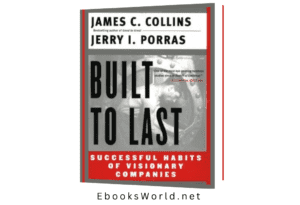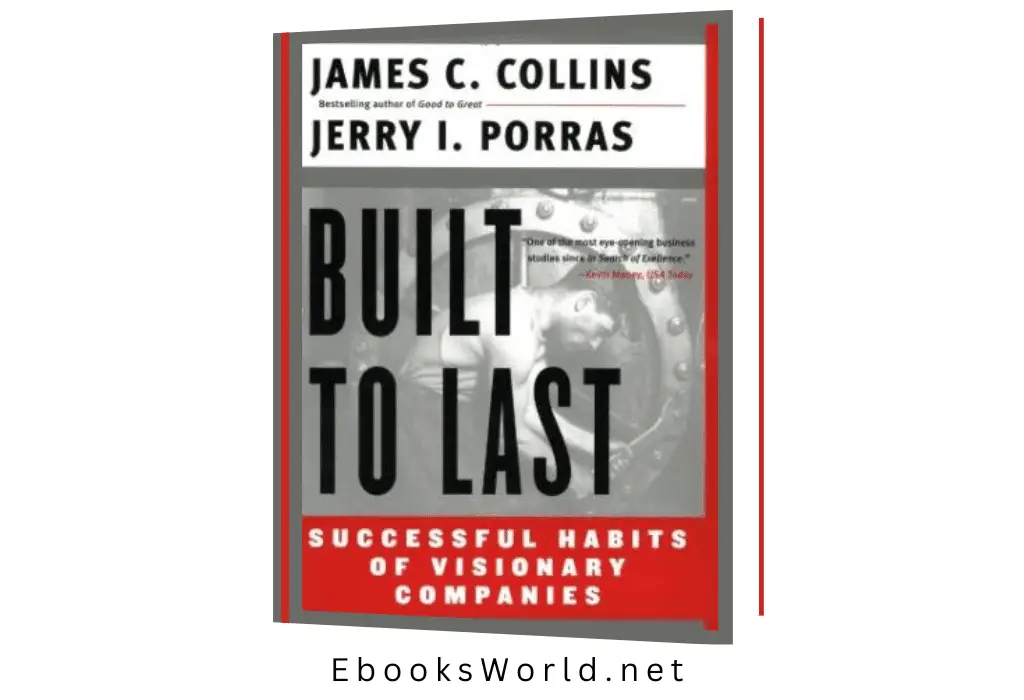Built to last: successful habits of visionary companies

“Built to Last: Successful Habits of Visionary Companies” is a business book written by James C. Collins and Jerry I. Porras, first published in 1994. The book explores what sets truly exceptional companies apart from their competitors and identifies common characteristics and practices that contribute to their long-term success. Here is a summary of the key concepts and themes from “Built to Last”:
1. The Study of Visionary Companies:
– The authors conducted an extensive six-year research project to identify and analyze a set of visionary companies that had consistently outperformed the market for decades. They compared these companies to their competitors to uncover what made them exceptional.
2. Time-Tested Success:
– The central premise of the book is that great companies are not built on hype, short-term strategies, or charismatic leaders alone. They are built on a foundation of enduring principles and practices.
3. The BHAG Concept:
– BHAG stands for “Big, Hairy, Audacious Goals.” The book argues that visionary companies set bold, long-term goals that guide their actions and inspire their employees. These goals are challenging but attainable and provide a sense of purpose.
4. Core Ideology:
– Visionary companies have a core ideology that includes a core purpose (a reason for being) and core values (guiding principles). These are timeless and guide the company’s decision-making.
5. Cult-like Cultures:
– These companies foster strong cultures that are often described as “cult-like” because they create a sense of belonging and identity among employees. The culture aligns with the core values and purpose.
6. Preserve the Core, Stimulate Progress:
– Visionary companies preserve their core ideology while being highly adaptable in their business practices. They maintain their core values and purpose while being willing to change and adapt other aspects of their business to stay relevant.
7. Tyranny of the OR vs. Genius of the AND:
– The book introduces the concept of balancing opposing ideas. Rather than choosing between two extremes (e.g., innovation OR stability), visionary companies find ways to incorporate both (e.g., innovation AND stability) for a more comprehensive approach.
8. Clock Building, Not Time Telling:
– Visionary leaders focus on building a lasting company that can thrive beyond their own tenure. They are “clock builders” rather than just “time tellers.”
9. Comparison with Competitors:
– The book frequently contrasts the practices of visionary companies with those of their less successful competitors, highlighting how the former’s long-term thinking and commitment to core values contribute to their success.
10. Examples of Visionary Companies:
– The authors provide numerous case studies, including companies like 3M, Disney, Hewlett-Packard, and Procter & Gamble, to illustrate the principles of visionary leadership and business practices.
“Built to Last” offers valuable insights into the enduring success of visionary companies. It encourages leaders and entrepreneurs to think beyond short-term gains and to focus on building organizations with a strong core ideology, innovative thinking, and a commitment to long-term goals. The book’s concepts have had a significant influence on leadership and management thinking and continue to be relevant for those looking to build and sustain successful businesses.







